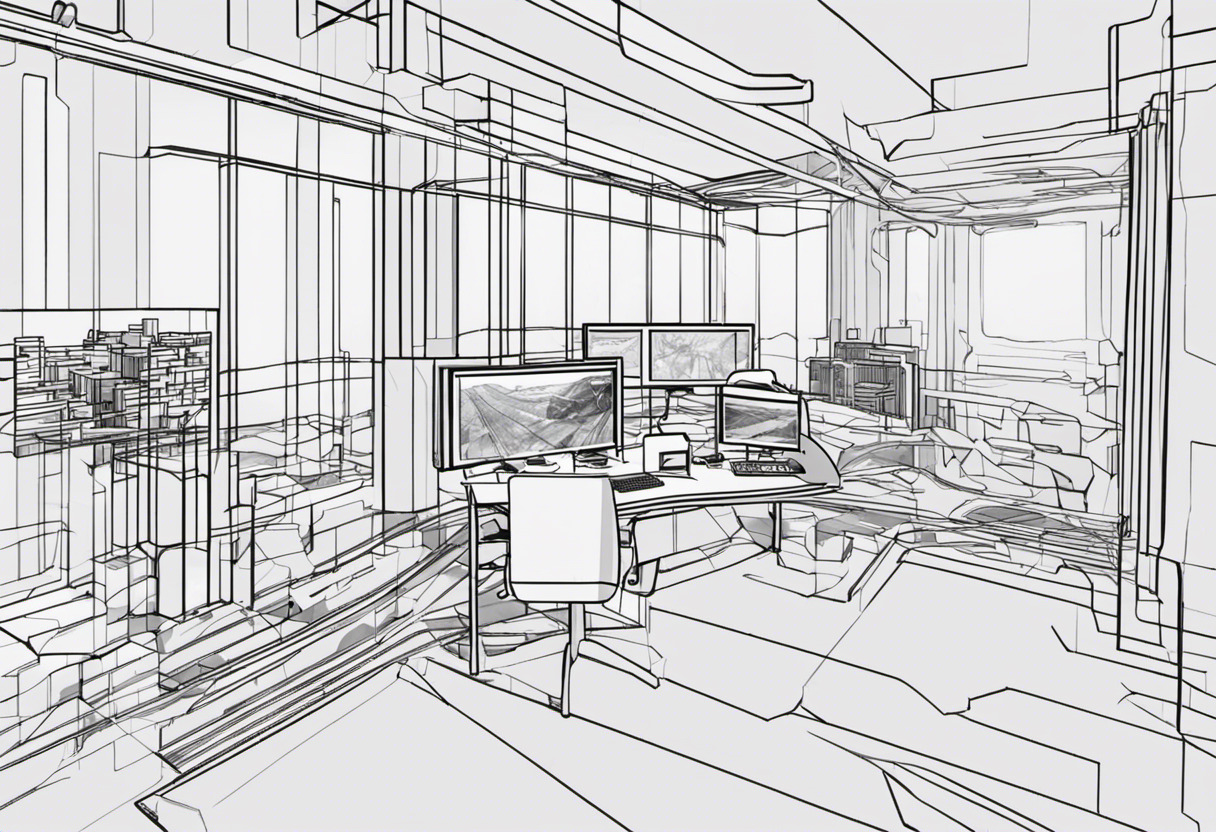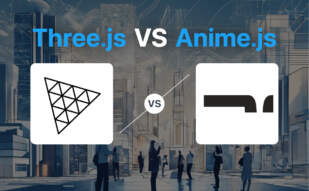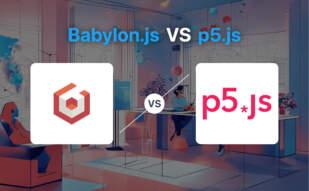For intricate 3D applications, Babylon.js, with its robust engine and contribution from Microsoft, outshines. So, developers anticipating a deep dive into 3D graphics should opt it. However, Anime.js excels in lightweight, yet powerful animations, making it a superior choice for basic animations and DOM manipulations.

Key Differences Between Babylon.js and Anime.js
- Babylon.js, a real-time 3D engine, specializes in creating 3D graphics and scenes, while Anime.js excels in creating and controlling basic animations.
- Babylon.js is developed by Microsoft and has numerous contributors, whereas Anime.js is a standalone lightweight JavaScript library developed in France.
- Babylon.js has an advantage of physically based rendering and post-processing methods for photo-realistic images, which Anime.js lacks.
- Anime.js holds an edge in animating HTML, CSS, and JavaScript objects with a lot of control properties like duration, delay, and loops, compared to Babylon.js’s rehearsed ecological uses.
| Comparison | Babylon.js | Anime.js |
|---|---|---|
| Original Developer | David Catuhe | Anonymous |
| Maintained by | Microsoft, other contributors | Community |
| Initial release | 2013 | 2010 |
| Latest stable release | 5.3.0 | v3.2 (Oct 2020) |
| Type | 3D engine | CSS, DOM, JavaScript animation library |
| License | Apache License 2.0 | MIT License |
| Animation | Key frame animation, skeletons with blend weights | Concurrent running animations, variable frame rates, animation keyframes |
| Physics engine | Cannon.js, Oimo | None |
| Use cases | Virtual worlds, visualization, education, gaming, product design | Web animations, UI/UX designs, game animations |
| Repository | github.com/BabylonJS/Babylon.js | github.com/juliangarnier/anime |
What Is Babylon.js and Who’s it For?
A real-time 3D engine, Babylon.js, developed by Microsoft and various contributors, allows developers to display vibrant 3D graphics through HTML5 in a web browser. Originally developed by David Catuhe, Babylon.js is written in TypeScript and JavaScript, amassing more than 190 contributors since its inception in 2013. The technology is versatile and finds application in areas such as virtual worlds creation, crime data visualization, medical education, military training, and product design.
Intended for developers, 3D modelers, and organizations chasing digital transformation, Babylon.js leverages web browser capabilities to provide seamless user experience. Its API is readily accessible for user projects giving users a wider playground to develop 3D applications with stunning visuals.

Pros of Babylon.js
- Wide range of applications
- Open-access API
- Real-world physical reactions simulation with plug-in physics engines
Cons of Babylon.js
- Limited use of constructive solid geometry
- Dependent on browser support
What Is Anime.js and Who’s it For?
Anime.js, a lightweight JavaScript library, empowers animators and developers by providing a powerful API to animate DOM, CSS, and JavaScript objects. Originating from France in 2010, Anime.js offers a plethora of animation and control properties like duration, delay, direction, and loop. Its capabilities transcend browsers’ native animation, although it may require building your own library for advanced animations.
Recommended for individuals, animators, and developers, it thrives in environments that demand professional animation frameworks. However, for React programs, alternatives like Framer Motion or Motion One are suggested due to certain limitations of Anime.js.

Pros of Anime.js
- Lightweight and efficient
- Enhances control over animations
- API access
Cons of Anime.js
- Lack of backwards animation support
- Potentially high CPU usage
Babylon.js vs Anime.js: Pricing
Both Babylon.js and Anime.js are offered as open-source technologies with no direct pricing tied to their usage.
Babylon.js
Babylon.js, a real-time 3D engine developed by Microsoft, is distributed under the Apache License 2.0, making the engine free to use. Its source code is accessible on GitHub, which implies no cost associated with using or modifying its code for your projects.
Anime.js
Anime.js is a powerful yet lightweight JavaScript animation library available for free. You can install the library through a direct download or by linking from a CDN. Furthermore, it offers free access to its API, permitting users to manipulate various animation properties.
Code Examples for Babylon.js & Anime.js
Babylon.js
This example creates a dynamic, spinning donut using torus in Babylon.js. To run this, ensure Babylon.js CDN is linked in your project.
var canvas = document.getElementById('renderCanvas'); var engine = new BABYLON.Engine(canvas, true);
var createScene = function () {
var scene = new BABYLON.Scene(engine);
var camera = new BABYLON.FreeCamera('camera', new BABYLON.Vector3(0, 0, -10), scene);
var torus = BABYLON.MeshBuilder.CreateTorus('torus', {diameter:3, thickness:1}, scene);
torus.position = new BABYLON.Vector3(0,0,0);
var light = new BABYLON.HemisphericLight('light', new BABYLON.Vector3(0,1,0), scene);
light.intensity = 0.7;
scene.registerBeforeRender(function () {
torus.rotation.y += 0.02;
});
return scene;
};
var scene = createScene();
engine.runRenderLoop(function (){
scene.render();
});Anime.js
Below is an example of an eye-catching element transformation using Anime.js. Ensure you have Anime.js CDN linked in your project.
var animation = anime({
targets: '.element',
scale: [
{x: 1, y: 1},
{x: 2, y: 2}
],
rotate: '1turn',
delay: anime.stagger(200),
endDelay: anime.stagger(200),
round: 1,
duration: 3500
});
animation.play();The Augmented Reality Showdown: Babylon.js vs Anime.js
For the tech devotees amongst us, the Babylon.js versus Anime.js matchup can seem like a thrilling race on a speedy track; but let’s extract the essence and lay down the verdict.
AR/VR Developers
The dynamism of Babylon.js warrants it as the go-to choice for AR/VR developers. Its real-time 3D engine, polygon modeling, and plug-in physics engines (Cannon.js and Oimo) facilitate robust virtual environments. Moreover, its commitment to photo-realistic images and complex animations recommend it for immersive AR/VR projects.

Game Makers
For game creators, Babylon.js wins yet again. Its TypeScript and JavaScript foundations along with game-specific use-cases such as portrayal of crime data and military training make it an audacious choice for complex game development scenarios.

Web Developers & Animators
Anime.js, with its lightweight and powerful API is a darling choice for most web developers and animators. Its prowess over basic animations stands unchallenged and is ideal for HTML tags, classes, or id elements.

In conclusion, when plunged into the vibrant world of 3D game development or AR/VR, Babylon.js stands unrivaled. However, should you require a nimble companion for web animations, Anime.js is the rewarding pick.
Tiffany Brise
Content writer @ Aircada, patiently awaiting a consumer AR headset that doesn’t suck.





